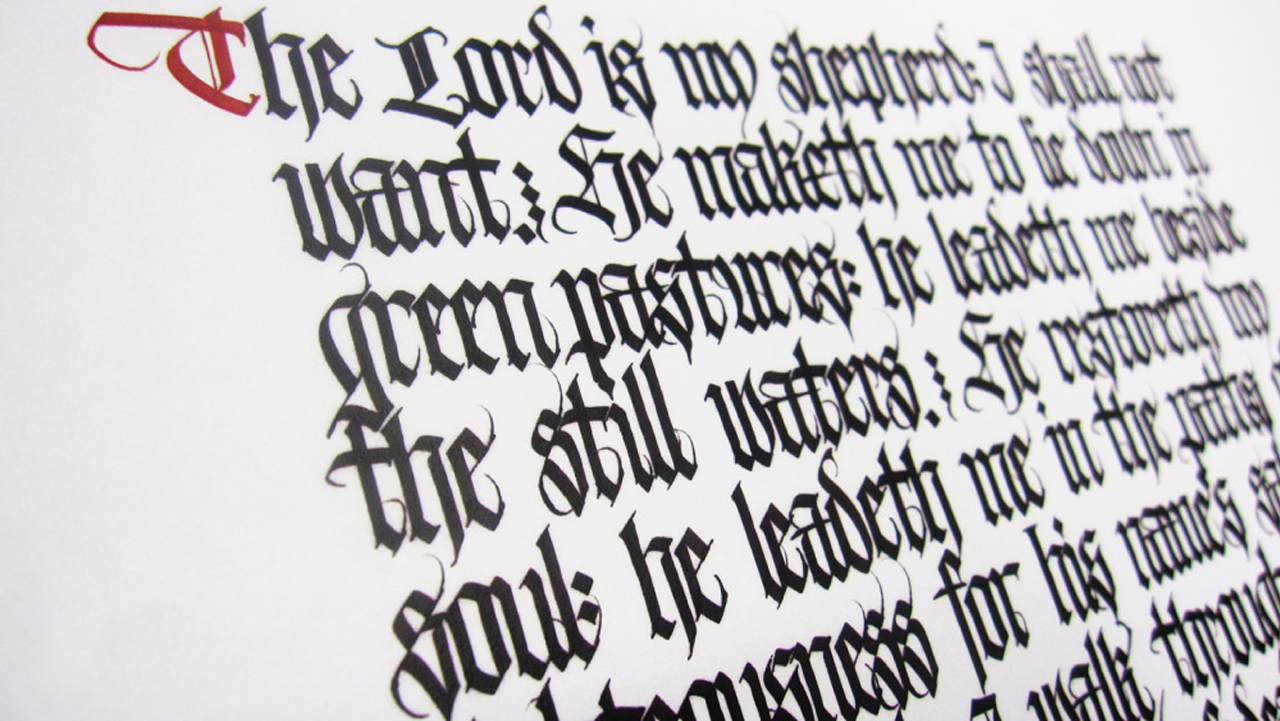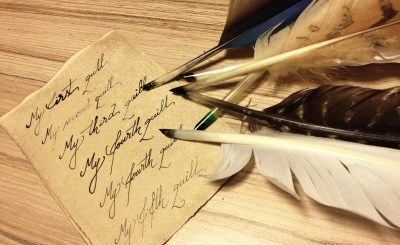Historians of all kinds appreciate the elegance, simplicity and beauty of calligraphy but few have taken the time to learn its secrets. This section offers a brief and basic introduction to one of history’s most evocative traditional skills.
The term calligraphy comes from two Greek words, kale graphe meaning beautiful writing. There are three main types of calligraphy: Oriental, Arabic and Western. Western calligraphy, arguably, has most relevance to UK historians.
Western calligraphy was developed over thousands of years, from Neolithic cave paintings and pictograms to magnificent medieval manuscripts and modern inscriptions.
It is hard to define calligraphy as either an art form or a craft. Experts say it encompasses the most enjoyable parts of both disciplines. Most importantly it is still evolving and has plenty of practical uses in today’s society. Certificates, awards, family trees and heraldry are all part of the modern day scribe’s task list.
In its basic form, calligraphy is a form of artistic writing where letters are made in few or many direct strokes. The discipline can be expanded to include illuminated lettering, where individual letters are turned into illustrations, sometimes multicoloured or even gilded.
Go to your local library and look for books with examples of calligraphy. Visit your local museum and see if they have any illuminated manuscripts or ancient documents. By looking at different types of calligraphy you will gain a deeper understanding of the discipline to use in your own work.
In this section
To find out more about this beautiful skill follow the links below. The pages offer advice for the beginner as well as a glimpse at the medieval ink making process.

